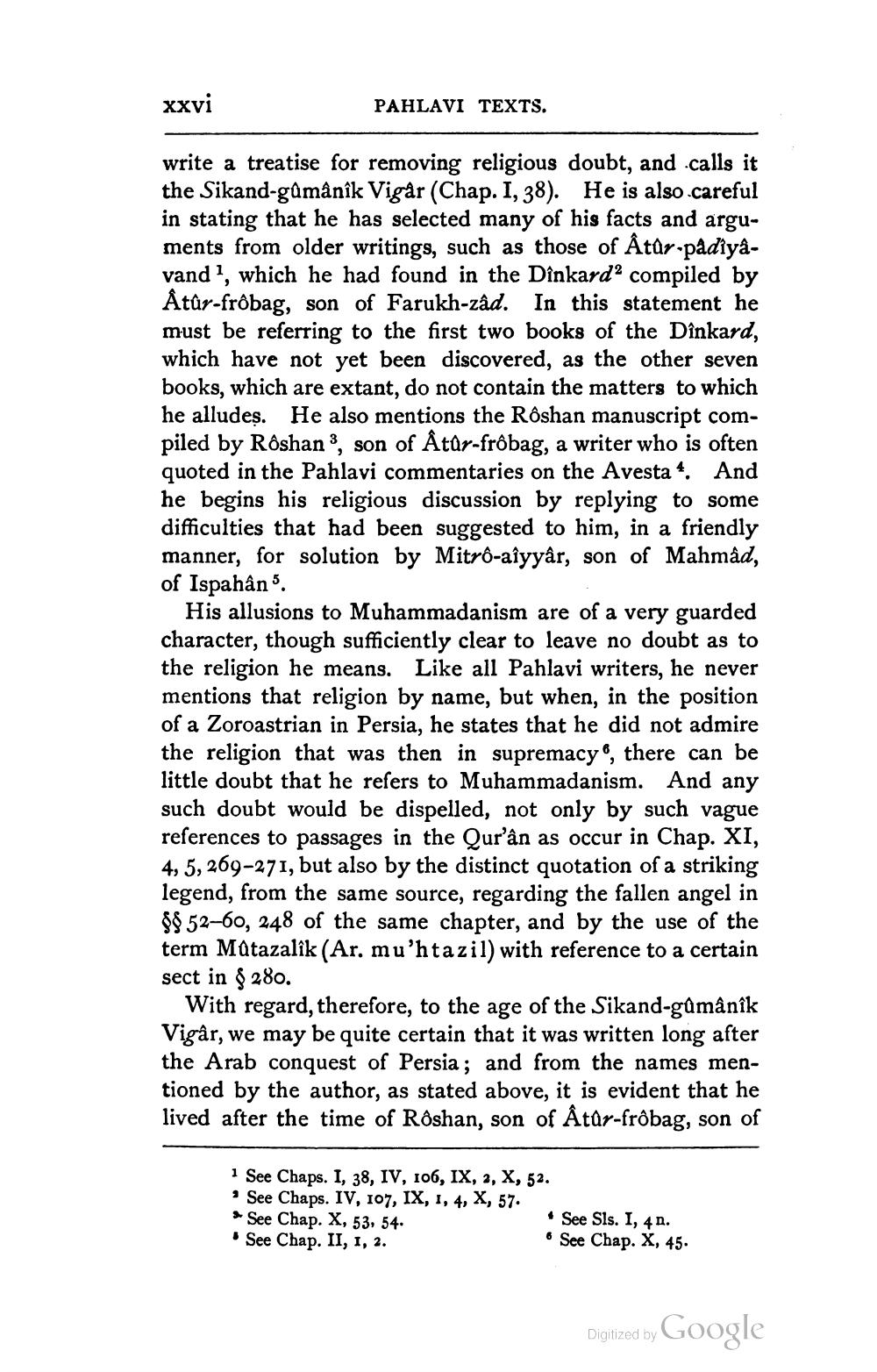________________
xxvi
PAHLAVI TEXTS.
write a treatise for removing religious doubt, and calls it the Sikand-gamânîk Vigår (Chap. I, 38). He is also.careful in stating that he has selected many of his facts and arguments from older writings, such as those of Âtūr-padiyâvand", which he had found in the Dînkarda compiled by Åtûr-frôbag, son of Farukh-zâd. In this statement he must be referring to the first two books of the Dînkard, which have not yet been discovered, as the other seven books, which are extant, do not contain the matters to which he alludes. He also mentions the Rôshan manuscript compiled by Rôshan, son of Atūr-frôbag, a writer who is often quoted in the Pahlavi commentaries on the Avesta 4. And he begins his religious discussion by replying to some difficulties that had been suggested to him, in a friendly manner, for solution by Mitrô-aiyyâr, son of Mahmâd, of Ispahân.
His allusions to Muhammadanism are of a very guarded character, though sufficiently clear to leave no doubt as to the religion he means. Like all Pahlavi writers, he never mentions that religion by name, but when, in the position of a Zoroastrian in Persia, he states that he did not admire the religion that was then in supremacy, there can be little doubt that he refers to Muhammadanism. And any such doubt would be dispelled, not only by such vague references to passages in the Qur'ân as occur in Chap. XI, 4, 5, 269-271, but also by the distinct quotation of a striking legend, from the same source, regarding the fallen angel in 88 52–60, 248 of the same chapter, and by the use of the term Matazalîk (Ar. mu'hta zil) with reference to a certain sect in 280.
With regard, therefore, to the age of the Sikand-gûmânîk Vigår, we may be quite certain that it was written long after the Arab conquest of Persia; and from the names mentioned by the author, as stated above, it is evident that he lived after the time of Rôshan, son of Âtar-frôbag, son of
1 See Chaps. I, 38, IV, 106, IX, 2, X, 52. • See Chaps. IV, 107, IX, 1, 4, X, 57. See Chap. X, 53, 54.
* See Sls. I, 4n. See Chap. II, 1, 2.
See Chap. X, 45.
Digitized by Google




